How to get out of the bubble of your preconceived notions
2Have you ever rehearsed an upcoming conversation in your head? “If he says this, I will say that. And then I need to make sure to mention that other thing.” This is one obvious way we try to predict our future interactions to better prepare for them. In fact, our brains are doing this all the time – they rehearse different potential scenarios while trying to plan for our energy expenditure and self-preservation. This is called “intrinsic brain activity” and it goes on all the time from birth till death.
“You might wonder what this hotbed of continuous, intrinsic activity is accomplishing, besides keeping your heart beating, your lungs breathing, and your other internal functions working smoothly. In fact, intrinsic brain activity is the origin of dreams, daydreams, imagination, mind wandering, and reveries, which we collectively call simulation. It also ultimately produces every sensation you experience, including your interoceptive sensations, which are the origins of your most basic pleasant, unpleasant, calm, and jittery feelings.”(1)
So pretty much everything you think and feel originates from those intrinsic interactions between neurons in your brain. “These neural conversations try to anticipate every fragment of sight, sound, smell, taste, and touch that you will experience, and every action that you will take. These predictions are your brain’s best guesses of what’s going on in the world around you, and how to deal with it to keep you alive and well.”(1)
So instead of reacting to your external environment, you project it. Imagine looking for a familiar book on your book shelf. 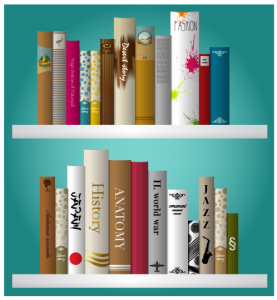 You might catch yourself visualizing what that book looks like: the size, color, title font and so on. You are basically constructing a mental image of the book in your mind, which makes it easier for you to find it once you spot a visual match on your shelf. And once you spot it, you will reach for it before you even recognize that you’ve found it. Now imagine looking for a new book simply by title in a book store. Even when you know which section it belongs in, if the titles are not alphabetized it will take you much longer to find your book. Since you don’t know what the book looks like, you will have to actually read each title to find the right one. This example demonstrates the difference between relying on your predictions (faster) and strictly on your sensory perceptions (slower).
You might catch yourself visualizing what that book looks like: the size, color, title font and so on. You are basically constructing a mental image of the book in your mind, which makes it easier for you to find it once you spot a visual match on your shelf. And once you spot it, you will reach for it before you even recognize that you’ve found it. Now imagine looking for a new book simply by title in a book store. Even when you know which section it belongs in, if the titles are not alphabetized it will take you much longer to find your book. Since you don’t know what the book looks like, you will have to actually read each title to find the right one. This example demonstrates the difference between relying on your predictions (faster) and strictly on your sensory perceptions (slower).
In the same way your brain has those preset models for all objects and sensations that you’ve ever experienced. It tries to anticipate your sensations and surroundings so that you could respond to them quickly. “Through prediction, your brain constructs the world you experience. It combines bits and pieces of your past and estimates how likely each bit applies in your current situation.” (1)
Your brain issues those predictions all the time and compares them to what you see, hear, smell, taste and feel. When the predictions do not match the sensory input, your brain can choose to correct those predictions or to ignore them. If your brain ignores sensory input you are more likely to live in the world of your own creation. We might call it “living in a bubble” because the outside reality cannot penetrate the bubble of your assumptions. We all have our own bubbles, but for some of us the bubbles are more permeable than for others.
According to the yoga tradition, living in your bubble can either cause you suffering (klishta) or not cause you suffering (aklishta) (Sutra 1.5) For example, if you were emotionally hurt by a cheating partner, every time you encounter a new potential mate your brain will be flashing “Cheater! Cheater!” even if there is no indication that this person would be unfaithful. You might choose to go with your prediction and avoid relationships altogether, or you might choose to trust your senses and keep your preconceived notions in check.
We have those preconceived notions about every single thing we feel or encounter. Sometimes it serves us well and other times it keeps us in the bubble of our own making. We can only get out of that bubble (temporarily) by focusing exclusively on the direct sensory input, which can override our preconceived notions. It’s no wonder that Patanjali says that “Direct sensory perception stabilizes and focuses thought” (Sutra 1-35). This is one of the most effective meditation techniques to anchor us in the reality of what’s actually going on, instead of what we think is going on.
Our predictions are also challenged when we are learning something new. In the process of learning we have to constantly compare the incoming stream of new sensory information to our preconceived notions and if there is conflict, resolve it somehow. For example, all the things you are learning about the brain from this article might challenge your views about your perceptions of the world. You can choose to absorb some of this information and integrate it into you worldview, and you might choose to disregard some of it because you like your original ideas better. Either way, reading this post had you question your past assumptions and made you compare them to your new sensory intake. This is what learning is all about. Continuous learning challenges the mind and prevents us from becoming too rigid in our views of the world. This is why in our yoga practice we want to emphasize direct sensory perception and on-going learning of new things and perspectives.
Since there is a built-in bias in the way our brains perceive the reality, is there such thing as “rational mind”? We will talk about it next time. Tune in!
[jetpack_subscription_form]References
- How Emotions Are Made: The Secret Life of the Brain by Lisa Feldman Barrett

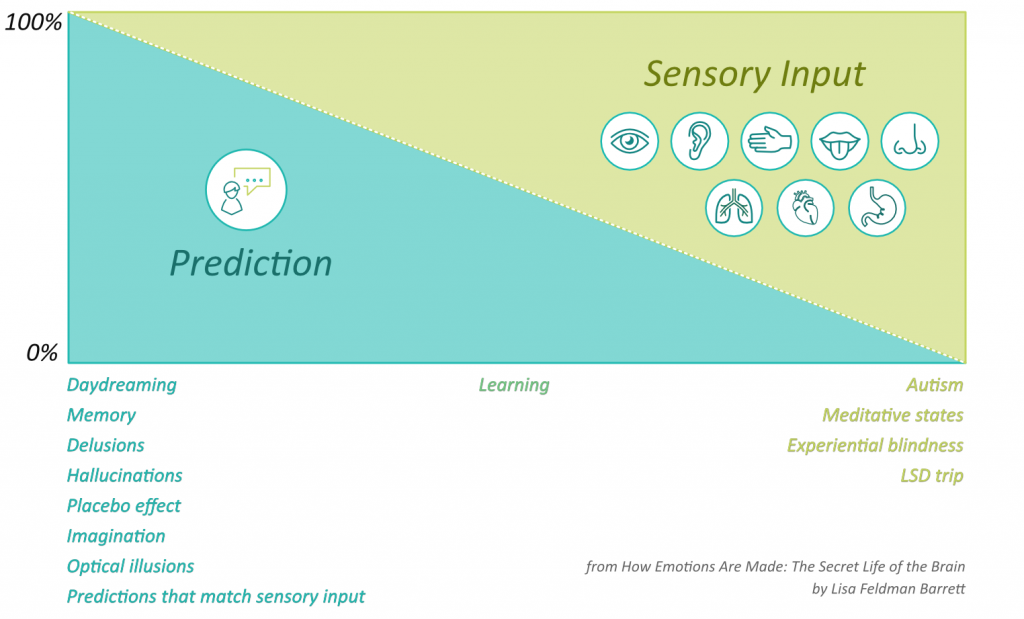
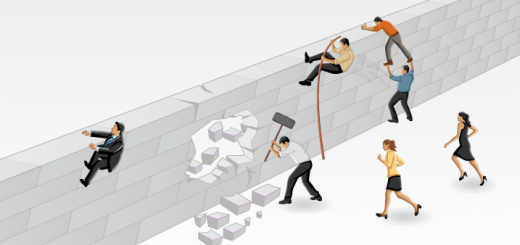

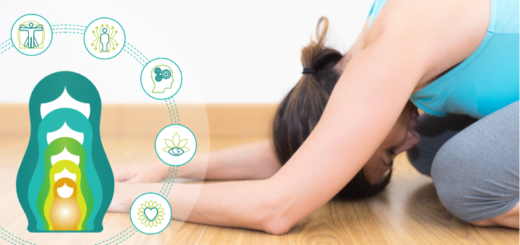
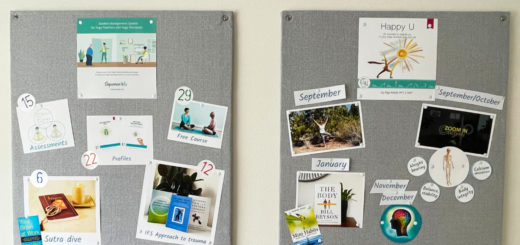















Olga, as usual, a brilliant and timely post! I so look forward to your emails!
Sincerely,
Sally Browder
“This is what learning is all about. Continuous learning challenges the mind and prevents us from becoming too rigid in our views of the world.”
Just another reason why we need more people practicing yoga – and reading! – these days! Thanks, Olga!